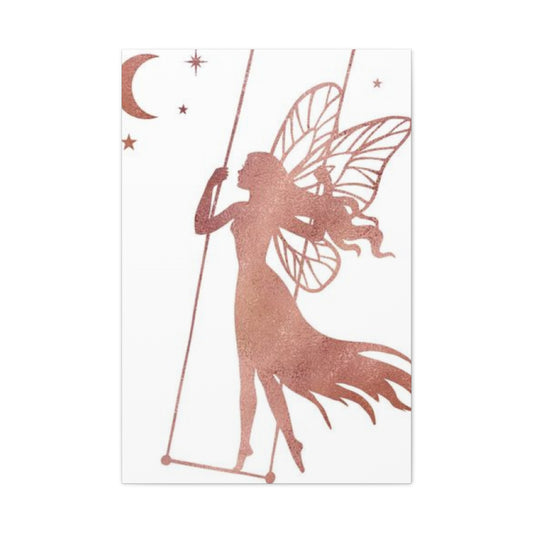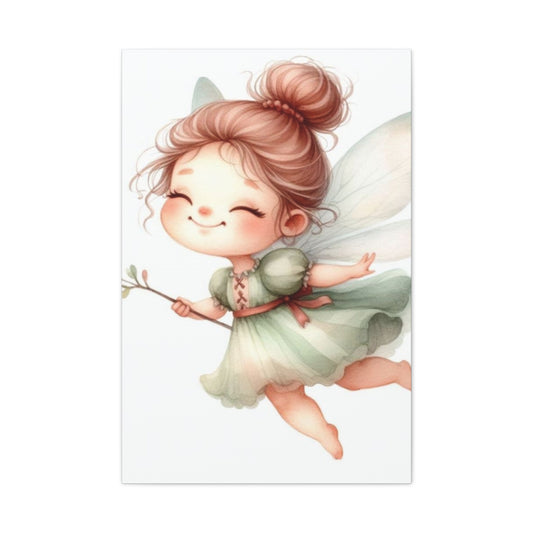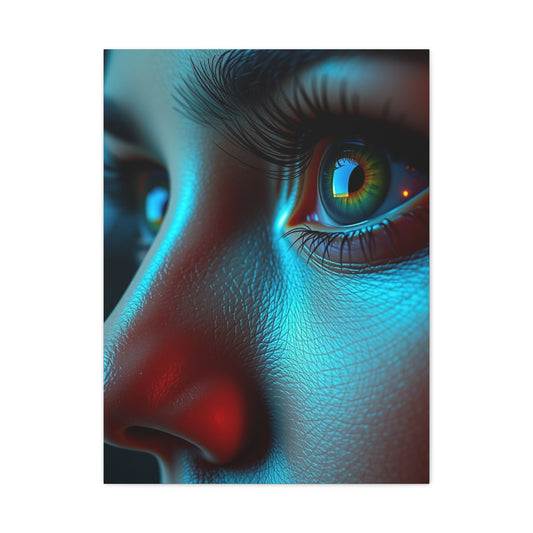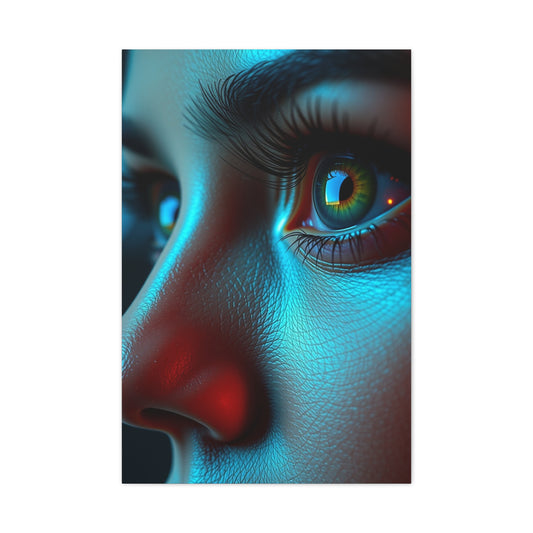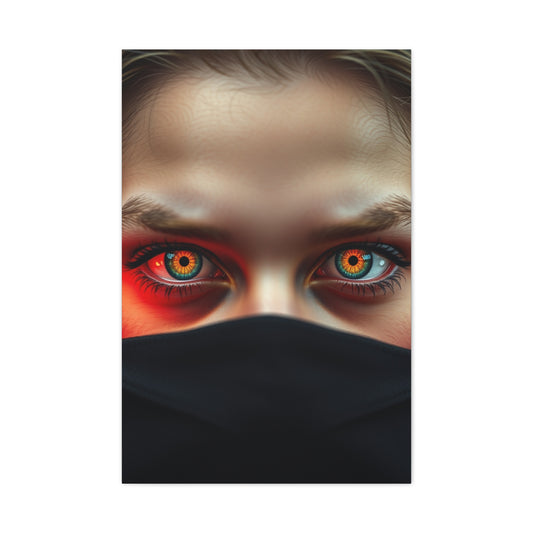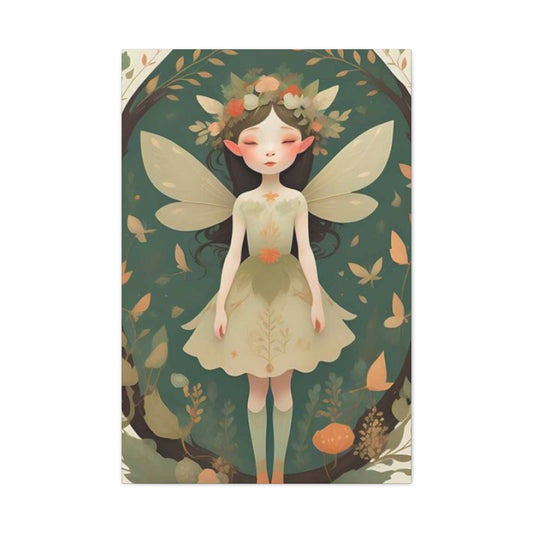Landscape photography connects us with the natural world, allowing us to capture the world in its raw, unrefined form. It enables us to tell stories and express emotions through images that transcend mere documentation. In fine art landscape photography, the artistry lies not in the scene itself but in the creative vision behind the lens. This style of photography is not just about photographing what we see, but about interpreting it through our unique perspective, allowing us to share a glimpse of the world through our eyes.
Understanding Fine Art Landscape Photography
Fine art landscape photography is more than just taking pictures of nature. It’s a form of visual storytelling that conveys emotion and engages the viewer. This genre of photography is all about creating something deeper than just capturing beautiful scenery—it's about crafting an image that embodies the photographer’s vision and connects with others on a more profound level.
Unlike traditional landscape photography, which might focus on merely documenting the beauty of a location, fine art photography invites the viewer to experience the photographer’s interpretation of that scene. The relationship between the photographer and the landscape is central, and it's this connection that elevates the photograph from a mere image to an expressive piece of art.
One of the most powerful ideas in fine art photography comes from Guy Tal, who notes that “your photos should be about things, not of things.” This means that your photograph should be a reflection of your interpretation, an emotional response to what you see, not just a straightforward representation. Through careful planning, creative techniques, and thoughtful composition, a landscape photograph can become a timeless piece of art.
1. Envision the Final Image Before You Shoot
In the realm of fine art landscape photography, success begins not with the press of a shutter, but with the spark of an idea. This idea, often rooted in an emotional connection or narrative impulse, is cultivated through pre-visualization—a foundational technique championed by legendary photographers such as Galen Rowell. Even in the digital age, where immediate feedback from a camera screen is readily available, the artistic depth of a photograph is still largely determined by the clarity of vision a photographer holds before capturing a frame.
Pre-visualization is not simply a mental rehearsal. It is an immersive process in which the photographer mentally composes an image, explores the interplay of elements within the scene, and determines how these elements will manifest emotionally and aesthetically. It asks you to be both a technician and a storyteller, to blend optics with intuition.
To truly pre-visualize, begin with intention. What do you want the viewer to feel? Is your aim to evoke a sense of melancholy through subdued light and desaturated colors, or are you striving to convey vitality with vibrant hues and dynamic compositions? Perhaps the landscape before you feels stoic and still, urging you to create an image that reflects introspection or silence. Each decision—composition, aperture, exposure, focal length—must be made in service of this vision.
Even the time of day and atmospheric conditions can dramatically affect the mood of the final image. Shooting at golden hour may drench the landscape in warmth, while an overcast morning might add a sense of stillness or solitude. If your scene involves vast, sweeping vistas, you might use a wide-angle lens to include foreground interest that guides the viewer’s eye. Conversely, to isolate emotion in a smaller fragment of the scene, a telephoto lens may serve you better, offering a more abstract, minimalist perspective.
|
Related Catagories: |
Fine art landscape photography demands deliberate observation. Stand quietly and absorb the sounds, colors, and textures around you. Visualize how these sensations could be translated into an image. Picture the final photograph hanging on a gallery wall—what feeling does it evoke from the viewer? Envision how subtle details like leading lines, patterns in the terrain, or layers of depth will reinforce your narrative.
Pre-visualization also extends to your anticipated post-processing workflow. If you plan to emphasize tonal contrast or subtly shift color balance, make mental notes about which parts of the image should be brought forward or subdued in post. Are you intending to burn in the sky slightly to anchor the scene? Will you lift the shadows to unveil details in a darkened forest floor? These thoughts help shape how you expose and frame the scene at the moment of capture.
Moreover, this practice trains your artistic eye. Over time, consistent pre-visualization fosters a disciplined yet imaginative mindset that influences every aspect of your creative process. It helps you move beyond the superficial act of photographing what is merely visible and instead challenges you to create what is felt, remembered, or dreamed.
The finest images often resonate not because of technical perfection, but because they embody intention. When a photograph is rooted in a clear vision and deliberate execution, it transcends documentation and becomes interpretation. And in fine art landscape photography, interpretation is everything.
2. Leverage the Power of Color and Post-Processing
Color is not merely a compositional element—it is a psychological device, an emotive force, and an indispensable tool in the fine art landscape photographer’s repertoire. Every hue, tone, and tint carries its own narrative weight. Through color, you can alter the perception of a scene, amplify atmosphere, and guide the viewer’s emotional response. Understanding the subtle interplay between colors and emotions is essential to transforming a landscape into a personal visual statement.
Start by recognizing how ambient light influences natural color. During the blue hour, scenes are bathed in soft, cool tones that suggest introspection and mystery. The golden hour, on the other hand, casts a warm, amber glow that can evoke optimism, nostalgia, or serenity. Midday light, often harsh and contrast-heavy, can be difficult to work with, but when managed carefully, it can also emphasize starkness and raw texture.
As you frame your composition, consider how the natural palette contributes to the image's mood. Rich green forests can symbolize renewal or tranquility. A field of golden grass may suggest abundance and warmth. Jagged rock formations under stormy skies, tinted in gray-blues and deep shadows, might convey a dramatic, almost cinematic tension. By being sensitive to these nuances, you can begin to manipulate and enhance the image in subtle but powerful ways during post-processing.
White balance adjustment is often the first step in influencing mood. Intentionally shifting the color temperature warmer or cooler can create an immediate emotional tone. For example, cooling the image down slightly can create a more ethereal or isolated feeling, while warming it up may instill a sense of calm and comfort.
Post-processing, when approached with restraint and artistic integrity, is not about distortion—it is about revelation. It allows the photographer to emphasize what was felt in the moment the shutter was pressed. Tools such as Curves, Gradient Masks, and HSL (Hue, Saturation, Luminance) adjustments can sculpt the photograph in ways that align it with your original vision. Consider adding a slight magenta tint to a cloudy sky to heighten mood, or subtly increasing vibrance in shadowed greenery to guide the viewer’s eye.
Selective desaturation can also be a valuable approach. By reducing the intensity of surrounding elements, you can direct attention to the primary subject, whether it’s a single tree in a winter field or the reflection of clouds in a still alpine lake. Muted tones often lend a photograph a painterly quality, inviting contemplation rather than immediate reaction.
One of the more refined techniques in fine art photography is the use of color harmonies—complementary or analogous color schemes that create visual balance. For instance, juxtaposing rust-colored cliffs against teal-blue skies produces a naturally appealing contrast. These relationships are not always immediately apparent in the field, but with experience and attention, you’ll begin to see them more instinctively.
Moreover, fine art post-processing is about subtle storytelling through layers. Consider using radial filters to draw light into specific parts of the frame, emulating natural vignettes. Use texture sliders with caution to bring out details in the bark of a tree or the ripples on water. The key is to enhance what is already present, not fabricate something that was never there.
Color grading also becomes a crucial step as you define your personal style. Some fine art photographers lean toward a cooler, minimalistic look, while others favor saturated, cinematic tones. Whichever path you follow, strive for consistency. A cohesive color signature across your portfolio builds identity and emotional resonance.
In addition to color, don’t underestimate the power of luminosity. Light and shadow interplay is what gives form and volume to a photograph. Subtle dodging and burning, a technique borrowed from darkroom printing, can add dimension and direct attention in nuanced ways. A slight lift in brightness across a path or waterline might invite the viewer to visually journey through the frame, while a shadowed corner can contain the composition, preventing the eye from drifting.
Fine art landscape photography thrives on intentionality, and your post-processing choices should reflect your internal dialogue with the scene. Think of your editing not as correction, but as orchestration. Every adjustment should serve a purpose, whether it’s to enhance tranquility, magnify tension, or distill clarity from complexity.
Ultimately, color and post-processing are extensions of your creative voice. Used with care and awareness, they transform landscapes into layered compositions that go beyond what the camera captures. They allow you to create photographs that are not just representations of nature, but reflections of how nature speaks to you—and how you, in turn, speak through your art.
3. Tell a Story Through Your Images
Fine art landscape photography is more than capturing aesthetically pleasing scenes; it’s a deeply expressive medium that allows photographers to tell evocative, emotional stories. The ability to infuse visual narratives into your images helps them transcend basic composition, creating a more meaningful connection with viewers. Through deliberate attention to the relationships between natural elements, you can suggest profound themes—solitude, resilience, transformation, or even fragility.
A simple but effective example of visual storytelling might be a solitary tree standing in the foreground of a vast, windswept plain. This imagery could represent isolation or perseverance in the face of overwhelming odds. Or consider a blooming flower nestled in a field of withering foliage—an understated but powerful metaphor for renewal and hope.
Telling stories through photography doesn’t require grand gestures or complex arrangements. Often, it’s the subtle contrasts that speak the loudest. Look for light juxtaposed with shadow, vibrant growth set against decay, or calm water beside jagged rocks. Every one of these visual contrasts can suggest a storyline. Using camera techniques to enhance these stories is a powerful approach. A long exposure that captures the soft flow of a stream may symbolize time slipping away, while a shallow depth of field can focus the viewer’s attention on a single subject, emphasizing its emotional importance in the scene.
Composition plays a central role in storytelling. The position of subjects, the direction of light, the way foreground and background elements interact—all these influence how a story is read. Visual weight, leading lines, and framing can subtly guide the eye to the most significant parts of the scene. Pay attention to how these elements affect the narrative quality of your image. Every decision you make—from your choice of lens to your vantage point—impacts the way the story unfolds.
You might also experiment with including human-made elements or figures in your compositions. A distant figure walking a trail can suggest a journey or a moment of introspection. A weathered fence post, a forgotten path, or even footprints in the snow can speak volumes about time, memory, or impermanence. These additions can ground the image in human experience and heighten its emotional resonance.
To take storytelling further, consider exploring recurring themes over a series of images. Documenting the changes in a single landscape throughout the seasons, capturing various states of weather, or showing human interaction with the environment over time can build a layered, nuanced story. Each photograph adds a chapter, and together, they tell a deeper tale about the passage of time or the transformation of nature.
Being attuned to your own emotional state when taking a photo can also influence the final outcome. Your perspective, your mood, and your interpretation of the scene will all influence the choices you make behind the camera. By reflecting those emotions in your visual storytelling, your images become more than just representations of nature—they become an extension of your own voice as an artist.
4. Capture the Unexpected
In fine art landscape photography, originality often stems from surprise—from presenting something familiar in a completely new way or discovering beauty in places others overlook. While grand vistas and iconic destinations have their place, some of the most powerful and enduring images are found in the unlikeliest of locations. The key is to remain observant and open to moments that defy predictability.
Hidden beauty exists all around you. You don’t need to travel to a national park to find extraordinary compositions. Instead, explore your own backyard, local trails, or nearby woods with fresh eyes. Use digital topographical maps to find intriguing landforms—valleys, ridges, secluded lakes, or dense forests that might be missed by the average hiker or tourist. A shift in elevation, a sliver of water cutting through terrain, or an old tree bent by wind can all provide compelling, original compositions.
Look for fleeting phenomena—things that might only exist for seconds or minutes. A sudden shaft of light breaking through storm clouds, mist swirling above a field at dawn, or frost patterns forming at sunrise can turn a mundane landscape into a magical one. Being patient and observant is essential. Sometimes the best image will present itself only after you've spent hours watching the light or listening to the wind.
Weather plays a crucial role in capturing the unexpected. Don’t shy away from less-than-ideal conditions. Rain, fog, snow, and wind all create unique atmospheres that alter a scene’s visual character. A dense fog can flatten backgrounds and make colors pop. A storm rolling in may add drama and tension. These moments, while challenging, offer you an opportunity to document the extraordinary under ephemeral conditions.
|
Related Catagories: |
You can also enhance the uniqueness of your work by using alternative perspectives and techniques. Shoot from low angles to emphasize foreground textures or climb to a higher vantage point to compress the scene into abstract layers. With a telephoto lens, you can isolate patterns, colors, or forms that are invisible in a wide view. Zoom in on overlapping mountain ridges, rippling sand dunes, or rhythmic patterns in tree lines—elements that can turn into abstract, almost painterly compositions.
Techniques like intentional camera movement (ICM), long exposures, or infrared photography open up new creative doors. Intentional blur, for instance, can evoke mood or suggest movement, while infrared captures light beyond the visible spectrum, transforming foliage into glowing white and skies into near-black canvases. These methods, when used thoughtfully, help produce visuals that are not only unexpected but unrepeatable.
Pay attention to details others ignore. The bark of a tree, the geometry of shadows on a rock face, the iridescence of a wet leaf—these micro-scenes often contain striking textures, colors, or patterns. Shooting tight compositions in these areas creates intimacy and intrigue. Minimalism, when executed with finesse, can be just as powerful as sweeping panoramas.
In photography, timing is everything. Revisit the same location under different light, seasons, or weather. What looks dull under harsh midday sun might transform into a masterpiece under stormy skies or during golden hour. You’ll discover that returning to a place again and again is the best way to catch those rare, fleeting moments that create unforgettable images.
Ultimately, capturing the unexpected is about shifting your mindset. Move beyond what you think a landscape photo should be and embrace what it could become. Let go of the chase for perfection and embrace spontaneity, curiosity, and experimentation. This open, responsive approach allows the landscape to speak for itself, revealing stories and beauty you might never have imagined.
5. Experiment with Telephoto Lenses
A telephoto lens is an indispensable asset for any fine art landscape photographer aiming to transcend traditional scenic captures. While wide-angle lenses are typically associated with sweeping vistas and dramatic foregrounds, telephoto lenses offer a completely different artistic narrative. They allow photographers to compress perspective, focus on isolated fragments of a landscape, and highlight micro-scenes within the grandeur of nature.
By zooming in on distant elements, such as rugged mountain ridges, cascading layers of hills, or even a solitary tree standing in a vast valley, telephoto lenses reveal nuances that are often overlooked. These isolated elements often possess their own visual drama, patterns, and texture that contribute richly to fine art compositions. Through focal lengths exceeding 100mm, it becomes possible to eliminate clutter and concentrate the viewer's gaze on the subject with surgical precision.
Effective use of a telephoto lens in fine art landscape photography hinges largely on subtle yet intentional composition. Unlike wide-angle shots where context and scale dominate, telephoto images thrive on form, alignment, and tonal harmony. Slight changes in vantage point—whether shifting a few inches left or adjusting height by a few degrees—can have profound effects on how elements align within the frame. Carefully crafted compositions can transform a mundane hill into a sculptural form or turn interlocking forest shadows into rhythmic abstractions.
Photographing wildlife also becomes more nuanced with a telephoto lens, enabling artists to document elusive animals within their native ecosystems without intrusion. Whether it's a deer standing motionless in golden dusk or a bird of prey perched high on a rock, the lens bridges the distance, allowing for naturalistic and candid portrayals that become integral parts of the landscape’s story.
Additionally, telephoto lenses are known for their unique “compression” effect, where elements appear closer together than they are in reality. This visual effect can create surreal, flattened vistas where mountain layers seem to cascade atop one another, intensifying depth and density. For fine art photographers, this opens creative pathways to develop atmospheric tension and visual poetry.
To stabilize the camera—especially at longer focal lengths—a sturdy tripod is crucial. Even the slightest tremor can render an image soft. Combining this with a remote shutter release or timer ensures critical sharpness. Also, incorporating lens hoods can help minimize flare and boost contrast during challenging lighting conditions.
Ultimately, telephoto lenses reveal the hidden symphonies of nature by focusing on fragments and turning them into focal masterpieces. They encourage a contemplative approach, requiring patience and precision to uncover compositions that resonate emotionally and aesthetically.
6. Embrace Post-Processing to Elevate Your Images
Post-processing is not merely a finishing touch in fine art landscape photography; it is an expressive medium in itself. While some purists may debate its legitimacy, the art of digital enhancement serves to refine an image into its fullest, most evocative form. It bridges the gap between what the camera sees and what the artist envisions, offering control over mood, detail, and emotion.
Among the many editing tools available, Curves adjustments stand out as one of the most powerful techniques for manipulating tonal range and contrast. By fine-tuning highlights, shadows, and midtones, Curves can dramatically alter the atmosphere of a landscape. For instance, by subtly darkening the midtones and accentuating the highlights, one can inject moodiness and depth, transforming a flat image into a scene that feels immersive and emotionally charged.
Another critical aspect of post-processing lies in texture and detail enhancement. Tools such as local contrast adjustment, selective sharpening, and clarity sliders can be used sparingly to bring out the tactile elements of a photograph. When applied thoughtfully, they emphasize the gritty details in tree bark, the crystalline structure of snow, or the ripple of water across a still lake, all without overpowering the natural beauty of the image.
Color grading is equally vital. The palette of a landscape often dictates the emotional impact it leaves. Whether desaturating greens for a more somber mood or enhancing golden hues to evoke warmth, color treatment enables the photographer to tell stories beyond mere documentation. Split toning, hue shifts, and targeted saturation can help build a cohesive visual language across a body of work, lending it a signature aesthetic.
Equally transformative is the use of dodge and burn techniques—tools that have been used since the darkroom era to control light and shadow. In the digital realm, these allow for sculpting of light to guide the viewer’s eye and emphasize certain elements. For example, slightly dodging a path that leads through a forest can create a subtle visual trail, pulling the observer deeper into the image.
Focus stacking is another advanced post-production method particularly useful in landscape scenes with both near and far elements. By blending multiple images captured at varying focus distances, one can achieve hyper-sharp results that surpass what a single shot could deliver, especially at narrow apertures where diffraction might degrade image quality.
Removing unwanted distractions is another hallmark of professional-grade post-processing. Whether it's an errant power line, a rogue hiker, or unnatural debris, content-aware tools and healing brushes allow for seamless removal. This purification of the frame ensures that the composition remains uninterrupted and that all attention is channeled where intended.
In addition to technical corrections, artists should feel encouraged to explore creative overlays and subtle effects that contribute to their visual narrative. Lens blur, light leaks, vignetting, or even simulated film grain can be utilized in moderation to imbue images with a timeless or dreamlike quality.
It is important to maintain a delicate balance. The goal is not to manufacture a fantasy world, but to elevate reality to its most poetic form. Over-processing can easily tip the image into artificiality. Instead, post-processing should function as a translator of vision—bringing forth the mood, drama, and emotion that might have been felt at the time of capture but not fully conveyed by the raw file.
As with any artistic craft, mastery comes through repetition and curiosity. The more one works within editing software—whether Adobe Lightroom, Photoshop, or alternative platforms—the more intuitive the process becomes. Over time, a photographer’s workflow will naturally evolve, reflecting their voice and perspective through consistent visual themes and treatment styles.
Post-processing is not a crutch but an extension of the photographer’s artistry. It allows one to sculpt light, balance chaos, and breathe soul into every pixel. The photograph that begins in the field is merely a canvas; it is in the digital darkroom where it often achieves its final, transcendent form.
7. Experiment with Seascape Photography for Impactful Compositions
Seascape photography holds a magnetic allure within the realm of fine art landscape photography. The perpetual movement of water, atmospheric moods, and ever-changing light conditions make the ocean one of the most emotionally evocative and compositionally diverse subjects a landscape photographer can explore. Unlike static landscapes, seascapes are alive—constantly shifting, flowing, retreating—and this dynamism can be harnessed to create visually arresting images.
One of the most intriguing aspects of seascape photography lies in its unpredictability. No two waves break the same way, no sky remains fixed for long, and no tide remains stationary. These transient qualities encourage photographers to think not only in terms of composition but also in terms of timing and rhythm. Long exposure techniques become especially potent in coastal scenes, allowing you to transform kinetic motion into ethereal beauty. When executed with precision, a long exposure can turn turbulent surf into silky textures, conveying a sense of serenity even amidst chaos.
The best time to capture seascapes often coincides with the so-called blue hour—a brief window of soft, diffused light occurring shortly before sunrise or after sunset. During this ephemeral period, the color palette of the sky and sea leans into tranquil shades of blue, mauve, and indigo. These tones, when juxtaposed with the minimalist nature of long-exposed water, create dreamlike compositions imbued with a quiet intensity.
To craft a compelling fine art seascape image, composition must be both thoughtful and intentional. Simplification is key. The sea, by its very nature, can introduce visual clutter if not composed carefully. One effective technique is to isolate a singular subject within the frame—such as a jagged rock protruding from the surf, a driftwood remnant washed ashore, or a weathered jetty cutting into the horizon. By reducing visual noise, these lone elements command attention and elevate the image’s narrative strength.
Foreground interest is also vital. Leading lines created by receding waves, ripple patterns in wet sand, or tidal trails can guide the viewer’s gaze from the front of the image toward the vanishing point, adding depth and dynamism. Utilizing the rule of thirds—or breaking it creatively—can further enhance the flow and balance of the frame.
Safety is paramount when working near water. Be vigilant of changing tides and rogue waves, and always stabilize your gear using a robust tripod designed to withstand both wind and water. Use a remote shutter release or a self-timer to avoid camera shake, especially during exposures of several seconds or more.
Filters are instrumental in seascape work. A neutral density (ND) filter can drastically extend exposure times, allowing water to appear fluid and glass-like. Graduated ND filters can help balance bright skies with darker ocean scenes, maintaining detail across the dynamic range.
Above all, seascape photography invites introspection. The interplay between motion and stillness, sky and sea, foreground and horizon encourages a meditative approach. It teaches patience, timing, and the beauty of fleeting moments—all foundational principles in fine art landscape photography.
8. Explore the Beauty of Black-and-White Landscape Photography
In a world saturated with vivid hues and chromatic intensity, black-and-white landscape photography stands as a bold artistic choice. It strips away the color to reveal a deeper, more abstract dimension of the scene—one where composition, form, light, and shadow take precedence. Within the domain of fine art landscape photography, monochrome imagery evokes a sense of timelessness, minimalism, and emotional gravitas that is often lost in color representations.
When you eliminate color, every other element becomes magnified. The viewer's eye is drawn to the textures of weather-worn stone, the rugged bark of ancient trees, the interplay of mist and mountain. Monochrome images allow light to sculpt the subject, unveiling tonal transitions and subtle gradations that would otherwise be obscured by color distractions.
Shooting with black-and-white in mind begins in the field. It requires a different mindset—one that is acutely attuned to contrasts, patterns, and geometry. High-contrast scenes, such as dramatic cloud formations over craggy peaks or sunbeams piercing through forest canopies, are ideal candidates. These compositions often translate beautifully into black-and-white, creating stark juxtapositions between light and dark that resonate powerfully.
In fine art black-and-white landscape photography, tonal range is your palette. The dynamic interplay between bright highlights and deep shadows creates tension, depth, and drama. Pre-visualizing how a scene will translate into monochrome is an essential skill. Think not only of the subject matter but also of the mood you wish to convey. Do you want your photograph to feel brooding and mysterious, or luminous and transcendent?
Texture is another pillar of monochrome photography. From the granular surfaces of desert dunes to the reflective shimmer of rain-soaked stones, black-and-white images accentuate tactile qualities. These textures become compositional tools, adding dimensionality and drawing the viewer deeper into the frame.
Post-processing plays a pivotal role in black-and-white conversion. While many cameras offer monochrome picture styles, more nuanced results are achieved through careful editing. Software like Adobe Lightroom or Capture One allows for selective luminance adjustments, giving photographers the ability to fine-tune specific tones. Dodging and burning—selectively brightening or darkening areas—can sculpt light and direct visual flow. Applying split toning can introduce subtle warm or cool casts, enhancing atmosphere without reintroducing color in a conventional sense.
Black-and-white photography also lends itself well to minimalist compositions. Sparse tree lines, isolated boulders in snow-covered fields, or lone silhouettes against expansive skies are all motifs that thrive in monochrome. The absence of visual clutter fosters emotional clarity, allowing the viewer to engage with the photograph on a more introspective level.
One of the most enduring reasons to embrace black-and-white is its power to transcend time. It connects today’s imagery with the heritage of historic photographers whose work has defined visual culture. Yet it remains contemporary, offering a fresh, conceptual take on modern landscapes.
9. Apply Gestalt Principles for Stronger Compositions
Gestalt principles are psychological concepts that can help you create more visually engaging and harmonious compositions. These principles include:
-
Shape and Form: Strong, recognizable shapes like diagonals and curves add interest and direction to the composition.
-
Contrast: High contrast suggests proximity, drawing attention to the subject, while low contrast can create a sense of distance.
-
Proximity: Grouping elements together can suggest a relationship or connection between them.
-
Symmetry: Symmetrical compositions often evoke feelings of balance and harmony.
-
Closure: Using lines or patterns that seem to connect can create a sense of unity within the image.
Applying these principles in your fine art landscape photography can help you create more compelling, dynamic compositions that draw the viewer’s eye and hold their attention.
10. Use Negative Space to Focus Attention
Negative space—unoccupied or empty space in a photograph—can be a powerful tool for focusing attention on your subject. By allowing the surrounding space to remain empty, you give your subject room to breathe and create a sense of simplicity and tranquility.
Experiment with different placements of your subject within the frame. For example, positioning your subject off-center and leaving large areas of the sky or land empty can enhance the impact of the subject. Negative space also introduces an element of abstraction to your photographs, allowing the viewer to interpret the image in their own way.
11. Pay Attention to the Small Details
While dramatic, sweeping landscapes often get the most attention, fine art photography is also about noticing the small, overlooked moments in nature. Sometimes, it's the smallest elements—a delicate ice formation, a solitary bird perched on a rock, or the patterns in the sand—that can make the most powerful images.
These subtle details often go unnoticed by others, but by focusing on them, you can create images that stand out and offer a fresh perspective. Look for textures, lines, and contrasts in the environment that others might miss, and let these small elements become the subject of your work.
12. Return to Familiar Subjects for New Perspectives
Great art often involves persistence and an ongoing exploration of familiar subjects. Revisit the same location or scene multiple times, each time seeking a new perspective or capturing a different mood. The changing light, weather, and seasons will offer new opportunities to refine your approach and capture a fresh interpretation of the same subject.
Returning to familiar places also allows you to experiment and develop a deeper understanding of how the environment changes. With each visit, you will discover new angles, compositions, and moments that you hadn’t noticed before. This ongoing exploration is a key component of developing your personal style and advancing as a fine art photographer.
Conclusion: Embrace the Artistry of Fine Art Landscape Photography
Fine art landscape photography is an expressive medium that allows photographers to share their vision and interpretation of the world. By focusing on pre-visualization, composition, color, and post-processing, you can elevate your landscape photography from a simple documentation of nature to an emotionally engaging work of art. Whether you're photographing the grandeur of a mountain range or the subtleties of a forest floor, remember that the most important part of fine art landscape photography is not just what you see, but how you choose to interpret and present it to the world.











